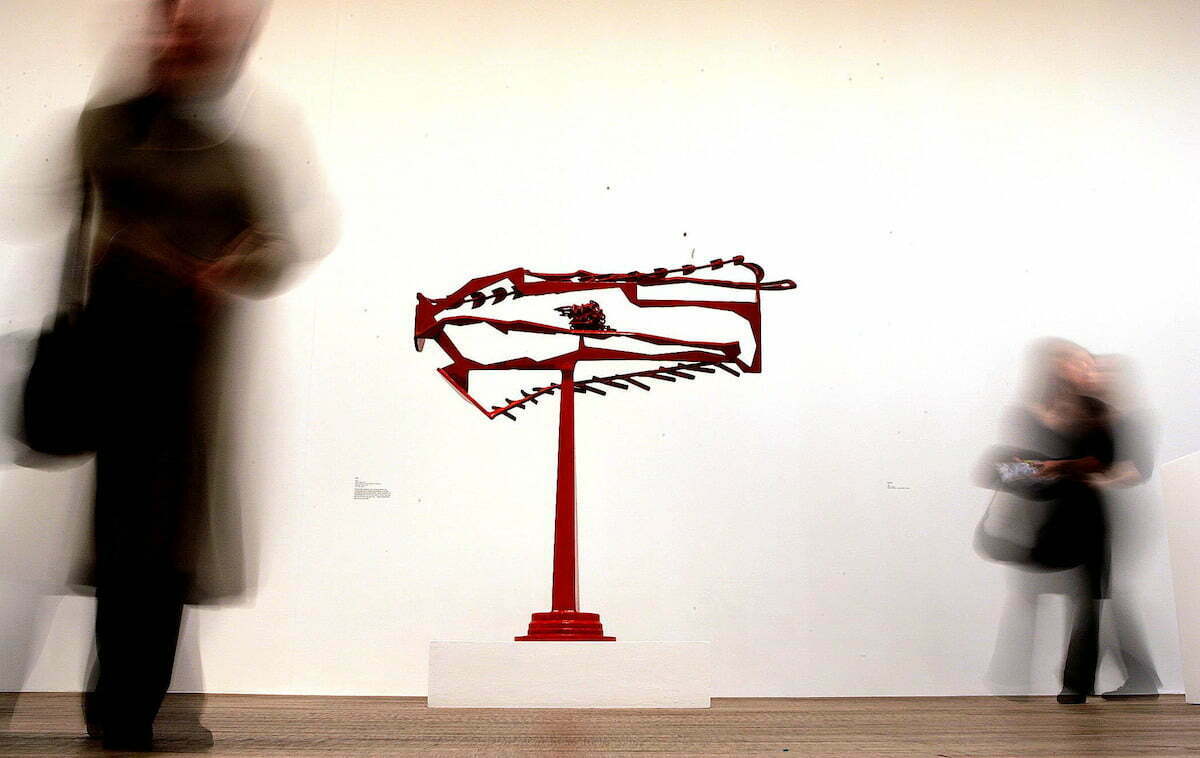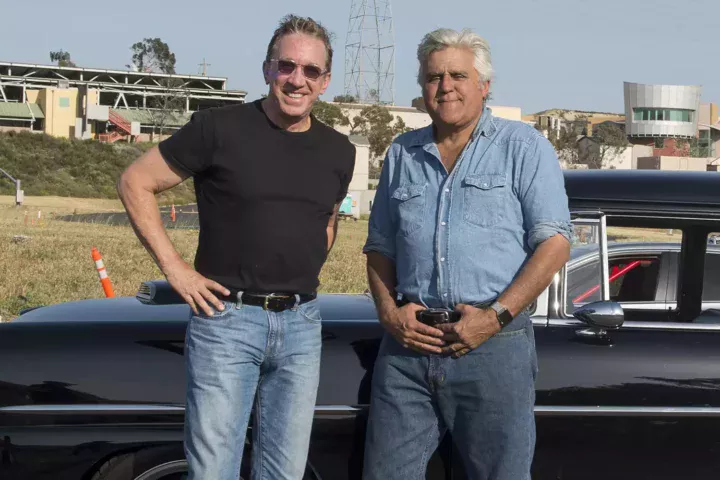Artnews – You can’t judge an artist biography by its cover, but based on its size, you can tell a lot about who’s being profiled before you even read the first page.
Mark Stevens and Annalyn Swan wrote a truly great biography of the Abstract Expressionist painter Willem de Kooning (732 pages), as well as another, more recent one about Francis Bacon (880 pages). Steven Naifeh penned the ultimate book on Jackson Pollock (934 pages), and Blake Gopnik recently wrote the life story of the Pop artist Andy Warhol (976 pages). The late art historian John Richardson has been celebrated for his Pablo Picasso biography, which spans four volumes, each of which is far longer than the average novel. One common denominator among them all is outsized art-historical impact; another is their race and gender.
No one would blame you, then, for eliciting a groan when you notice that critic Michael Brenson’s new doorstopper of a biography of the sculptor David Smith comes in at 834 pages. Another epic work of nonfiction touting a straight white male artist? Well, not quite.
Brenson’s biography, David Smith: The Art and Life of a Transformational Sculptor, has a title that suggests grandness, admiration, and ego stroking. But what is contained within its pages is something much more nuanced. It lays bare the fact that Smith’s game-changing artistic practice existed side-by-side with his misogyny, which, in Brenson’s telling, nearly ground down many women in his orbit.
“Genius” is typically the word applied to someone like Smith, who was—and remains—one of the most beloved American artists of the postwar era. He made monumental sculptures of steel at a time when painting was still considered the pinnacle of art-making, and critics fell hard for them. As early as 1947, when Smith had not even yet come to the abstract style that made him famous, the critic Clement Greenberg, who went on to boost many Abstract Expressionists, called Smith “the greatest sculptor the country has ever produced.”
Who gets to be “the greatest sculptor the country has ever produced,” and why? It’s a question Brenson asks implicitly when, in the biography’s introduction, he writes, “In this book’s search for a true picture of David Smith, the multiple aspects of the man and his art must be in play.” To put it another way, you probably ought to square David Smith, the womanizer, with David Smith, the talented sculptor, if you’re really going to consider him at all.
One of the aspects that Brenson is referencing is almost certainly Smith’s prodigious ability to form abstractions from steel. He made this heavy material appear to defy gravity. Take the example of Cubi I (1963), a “monster” of a sculpture, as Smith himself described it, in which a pile of squares rises 10 feet into the air. Improbably balanced against a smallish disc at the bottom, the sculpture is awe-inducing—“a soaring gesture of human longing for transcendence,” as Guggenheim curator Edward F. Fry once wrote.
But another of those aspects might account for the fact that, as Brenson writes, Smith had a tendency to “speak of women like meat.” “His coarseness,” according to Bresnon, “contributed to an aura of defiance and authenticity. It reveals the mix of rage, vulnerability, buoyancy, and desperation packed within him at this moment. This mix had a terrible and fertile potency.”

To reconcile these seemingly opposed parts of Smith’s personality and work, Brenson journeys back to Smith’s upbringing during the 1920s in Decatur, Indiana, and, later, in Paulding, Ohio. In the latter place, during his free time, Smith exploded dynamite and fired off Civil War–era cannons for fun, which the art historian Rosalind Krauss once wrote is an example of “the violence that Smith directed toward the people closest to him.” It was also in high school that Smith “embraced the romantic world-making image, or cliché, of the sculptor,” per Brenson.
He tried the traditional route for a young man at the time by attending college, but he very nearly flunked out and was dissatisfied with the lack of art courses on offer. So he struck out on his own, working jobs at a Studebaker car factory and then a bank in Washington, D.C. Of the latter role, he once claimed that he shot off the entire magazine of a pistol into the bank’s floor just to get himself fired. Likely story. Brenson says that narrative’s truth is “impossible to determine.”
By the end of the ’20s, Smith had moved to New York and fallen in love with Dorothy Dehner, an artist in her own right who later became his first wife. With her, he bought a farm in Bolton Landing, a remote town upstate that would ultimately host his studio. He also began taking classes with the Art Students League, where he learned under the aegis of artists like John Sloan and Jan Matulka, who opened his eyes to emergent modernism and leftist politics.
Smith was still a painter at this time, but he slowly gravitated toward sculpture—perhaps a little too slowly for impatient readers, who will have to wait more than 300 pages to reach what Brenson calls the “breakthrough” sculptures of the 1950s. By then, he’d begun working steel, hardly a commonplace material for artists at the time. He set up his studio not in a loft but in the Terminal Iron Works in Brooklyn, where he could appear like a laborer instead of an artist. In 1935, he began labeling himself as a sculptor.
Something changed within him during the ’40s. He transitioned out of the skillful, if somewhat dry, figurative mode he’d been working in, and abandoned it for abstractions that only loosely alluded to the human body, whose elements were contorted, disassembled, and reassembled beyond recognition. No doubt World War II influenced that—he aided in the construction of tanks that were shipped abroad for conflict. Yet an inner rage also bubbled within him, and the people around him seem to have felt it.
His marriage to Dehner came apart in 1950 after he led an affair with Jean Freas, a woman 28 years younger than his wife, who did not know about their liaison. (Instead, it was Smith’s abuse—emotional, verbal, and physical, his friends claimed—that did the couple in.) As Smith and Dehner’s ties began to fray, Smith started to hit it big, falling in with the group that would later become known as the Abstract Expressionists. Their decoupling was inseparable from Smith’s rise to public acclaim.
Pollock, Kline, de Kooning, and others were throwing, pushing, and splattering paint across gigantic canvases. Smith’s sculptures cleverly translated these works for the third dimension. Hudson River Landscape (1951) is a winsome mixture of steel elements that appear to droop, skitter, and slope around. The jagged juxtapositions between the two are oddly elegant. They are also unsettling when you consider that the work is inspired by sights seen during Smith’s trips to meet Freas at Sarah Lawrence, where she was a student.
Smith’s relationship with Freas went the same way: he married her, then divorced her after numerous blowout fights. The psychological warfare at home did not seem entirely evident to anyone observing Smith’s art, however, which was being acquired by august institutions like the Museum of Modern Art.

While Smith and Freas divorced in a series of proceedings that often grew ugly, his desire for sex with women—always young ones—grew “obsessive,” according to Brenson. It would be easy for any Smith biographer to lapse into an unpleasant recounting of the artist’s romantic exploits, which Brenson does offer for those interested. That recounting includes a lengthy examination of Smith’s time teaching at Bennington College, during which time he took a spread of young female students as his lovers.
More than simply retelling all this, however, Brenson looks to Smith’s work for evidence of how his violent sensibility leaked out into his art.
Brenson takes up the “Voltri” sculptures, some of the greatest works Smith ever produced. Made during the ’60s in Italy, they feature groupings of non-figurative elements that are set atop tables and workbenches, which are then, in some cases, precariously mounted on wheel-like pieces that appear as though they could roll away, sending the whole thing into ruin. They don’t seem particularly brutal until you remember that Smith likened them to skeletons. “Smith’s scratching, or incising, can seem to violate the surface,” Brenson astutely notes.
Less than a half-decade after Smith began the “Voltri” works, his career came to a tragic end, when, in 1965, at age 59, he crashed his car into a telephone pole and died. What to do now, more than half a century on? Should we cancel David Smith?
Brenson’s biography is likely to provide fodder for people who will want to do so, though its author takes no firm stance. Instead, Bresnon closes out by noting that “Smith, like other great modernists, had been obsessed with survival. Working with steel he made sculpture that would be hard to destroy.” It’s true that you can’t make Smith’s sculptures go away—they’re too heavy and too big to make disappear. But you can consider Brenson’s biography a much-needed ding on their beautiful surfaces.














